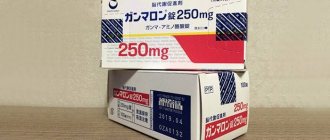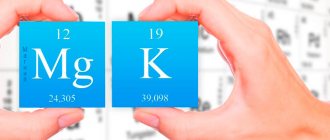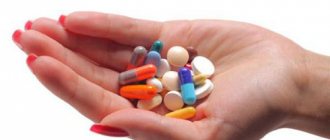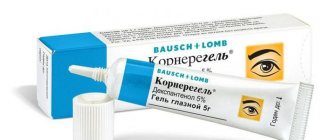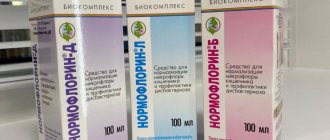Instructions for use of the drug
"Anaprilin" belongs to a group of blockers of adrenergic receptors located in different parts of the human body: blood vessels, muscles of the heart, bronchi, uterus and prostate gland.
The interaction of the drug with sensitive cells prevents the stimulating effect of the nervous system and endocrine glands, which explains its use for idiopathic tremor and endocrinological diseases. In cardiological practice, the drug is most often prescribed to patients with coronary heart disease. The active substance helps reduce the myocardial oxygen demand and prevents remodeling (restructuring) of the heart muscle. The drug has been proven effective in reducing mortality when taken in the first hours after a heart attack.
Indications: what does the medicine help with and when is it used?
The multidirectional effect of the drug on the structures of the body determines its widespread use in medical practice. The instructions for use of "Anaprilin" highlight the following indications for prescribing the medication:
- Essential (primary, idiopathic) arterial hypertension is a disease accompanied by persistent excess of standard pressure values for no apparent reason;
- coronary heart disease (CHD) – a pathology characterized by impaired blood supply to the myocardium with typical pain in the chest during physical activity;
- angina pectoris – a chronic form of coronary artery disease;
- hypertrophic cardiomyopathy – a pathology characterized by the proliferation of muscle fibers, which reduces the volume of the chambers of the heart;
- rhythm disturbances: atrial flutter or fibrillation (atrial fibrillation), supraventricular tachycardia, extrasystoles;
- pheochromocytoma - a tumor of the adrenal tissue that synthesizes catecholamines (adrenaline, norepinephrine);
- essential tremor - “trembling” of the hands or other parts of the body for no apparent reason, familial cases are more often recorded;
- alcohol withdrawal is a complex of disorders caused by abstinence in people with alcoholism;
- infantile hemangiomas - benign tumors of the vascular wall (more common in children);
- diffuse toxic goiter and thyrotoxicosis of another etiology (against the background of thyroiditis) are diseases of the thyroid gland, accompanied by increased synthesis of hormones. "Anaprilin" is prescribed as a second-line drug.
In addition, the product is used to prevent migraine attacks, panic attacks and deep anxiety.
Directions for use: how to take?
The regimen for using “Anaprilin” is determined by the person’s age, disease and severity of the pathology. The average therapeutic doses and frequency of administration of the drug are presented in the table.
| Disease | Form | Dose (in milligrams) | Multiplicity |
| Arterial hypertension | Tablets, capsules | 40 | 2 times a day (if ineffective, increase to 4) |
| Angina pectoris, arrhythmias | Tablets, capsules | 20 – 2 weeks, followed by an increase to 40 | 3 times a day |
| Post-infarction state | Tablets, capsules | 80 | 3 times |
| Paroxysmal arrhythmias, thyrotoxic crises | Solution for intravenous administration | 1, after 2 minutes - again | If there is no effect, inject up to 10 times under control of the rhythm and pressure level |
| Migraine | Pills | 40 | 3 times a day |
In obstetric practice, Anaprilin is used to stimulate the onset of labor and prevent hypotonic bleeding in the postnatal period. The dose of the drug is 20 mg 3 times a day for 3-5 days.
The drug should be stopped gradually due to the risk of developing rebound syndrome (progression of symptoms of the underlying disease). The dose used is reduced by 25% every 3-4 days until complete withdrawal.
Composition and release form
"Anaprilin" (active ingredient - propranolol) is a drug that is used for long-term use and emergency care, therefore, for convenience, it is available in different forms.
| Release form | Dose of Propranolol |
| Pills | 10 and 40 mg |
| 0.25% solution for intravenous administration 1 mg | 2.5 mg per ampoule |
| 1% solution – 5 ml | 5 mg per ampoule |
| Long-acting depot capsules, taken once a day | 80 mg |
Mechanism of action: how quickly and for how long?
Propranolol is a non-selective (no selective effect on the cardiovascular system) beta-blockers without internal sympathomimetic activity, which causes a wide range of therapeutic effects:
- Decrease in heart rate (due to the effect on receptors in the myocardium).
- Reducing the oxygen demand of the heart muscle (this is how the antianginal effect of the drug is realized).
- Decrease in total peripheral vascular resistance (with long-term use). In the first 2 weeks, there is an increase in the tone of smooth muscle fibers, respectively, in diastolic blood pressure, followed by stabilization and decrease.
- Increased tone of smooth muscles of the bronchi (bronchospasm) and uterus (stimulation of labor).
- Depressive effect (the drug penetrates the blood-brain barrier and has a direct effect on centers in the brain).
- Slows down the processes of iodine metabolism in the body (inhibitory effect on the thyroid gland).
- Hypoglycemic effect: blockade of receptors reduces the counter-insular effect of adrenaline and contributes to a drop in blood glucose levels (one of the contraindications of the drug is diabetes mellitus).
"Anaprilin" belongs to the group of lipophilic beta-blockers, which are quickly and in high concentrations absorbed from the gastrointestinal tract. In the blood they combine with proteins: 95% of the drug is in bound form. The drug begins to act after 1 hour (when taking tablets), reaching its maximum concentration within 2 hours.
The duration of the effect of tableted “Anaprilin” is 4-6 hours, which determines the frequency of administration of the drug.
Metabolism and excretion processes occur in the liver, therefore, in patients with dysfunction of the hepatobiliary system, smaller doses of the drug are recommended due to the risk of accumulation and overdose. Less than 1% of the drug is excreted by the kidneys.
Side effects and symptoms of overdose
Undesirable consequences of using “Anaprilin” are associated with the accumulation of active metabolic products or intake against the background of contraindicated conditions:
- orthostatic hypotension – a drop in blood pressure when changing position from horizontal to vertical;
- bradycardia (decreased heart rate): frequency reaches 40-50 per minute;
- allergic reactions: itchy rash, swelling;
- blurred vision (due to decreased secretion of the lacrimal glands);
- dry tongue, nausea, vomiting, pain in the upper part and bloating, diarrhea;
- redness of the skin, hair loss, the appearance of psoriasis-like peeling;
- collapse - a decrease in vascular tone in the arteries of the brain with loss of consciousness;
- muscle weakness and numbness of the limbs;
- nasal congestion, broncho- or laryngospasm;
- hypoglycemia (in patients with diabetes mellitus, propranolol prolongs and enhances the effect of insulin);
- headache, weakness, increased fatigue;
- sleep disorders (insomnia or pathological daytime sleepiness);
- conduction disorders: atrioventricular block.
If your health worsens and side effects occur, you should stop taking the drug and consult a cardiologist.
Main symptoms of poisoning:
- dizziness;
- severe bradycardia and drop in blood pressure;
- loss of consciousness;
- difficulty breathing (noisy exhalation);
- cyanosis of fingers and toes (in children - faces);
- convulsions;
- on the electrocardiogram: conduction disturbance in the AV node, frequent ventricular extrasystoles.
The toxic dose is individual for each person, depending on the state of the liver enzyme system and the presence of concomitant diseases. In most cases, symptoms of poisoning develop with the simultaneous use of more than 1 gram of the drug.
Alcohol compatibility
According to the instructions for use of the drug, drinking alcohol while taking Anaprilin is not recommended. Toxic exposure occurs due to:
- damage to liver enzyme systems by ethanol metabolism products, disturbances in the processes of metabolism and excretion of the drug;
- additional inhibitory effect on the central nervous system;
- alcohol causes tachycardia and increased blood pressure, which neutralizes the effect of Anaprilin;
- increased side effects of the medication (headache, weakness, nausea).
Compatibility of the drug with other substances that affect the nervous system – increased depressive effects.
Pharmacodynamics and pharmacokinetics
The main active ingredient is propranolol . Anaprilin is a non-selective adrenergic blocker, reduces the sympathetic effect on beta-adrenergic receptors of the heart, reduces the frequency and strength of heart contractions, reduces the contractile function of the myocardium, regulates cardiac output downwards, blocks the positive inotropic and chronotropic effect of catecholamines, reduces the heart's need for oxygen, reduces arterial pressure. The mechanism of action of the drug is aimed at increasing bronchial tone through blockade of beta2-adrenergic receptors. Anaprilin increases the contractility of the uterus, reduces the risk of bleeding during childbirth, the postpartum and postoperative periods.
When taken orally, the drug is quickly absorbed and excreted from the body. The maximum peak content of the active substance in the blood plasma is recorded after 1 -1.5 hours. The drug penetrates the fetoplacental barrier.
Is there a lethal dose of Anaprilin?
A lethal outcome when using “Anaprilin” develops with the simultaneous use of 2 grams of the drug. Death occurs due to impaired blood supply in the arteries of the brain, inhibition of the vasomotor and respiratory centers. Patients die from circulatory and respiratory arrest within 2-3 hours.
Emergency assistance when the first signs of an overdose appear includes:
- rinse the stomach (stimulating vomiting is strictly prohibited);
- take enterosorbents (“White Coal”, “Smecta”);
- upon arrival of the ambulance - connection to intravenous detoxification therapy;
- antidote (antidote): Orciprenaline sulfate (“Ac”);
- glucagon intravenously at a dose of 2-5 mg (bolus), maintenance dose - 1 mg/hour;
- atropine sulfate intravenously 1 mg;
- if you have a dosing syringe: “Isadrin” 1-5 mg/hour or “Dopamine” 5-8 mcg/min.
Patients with signs of acute poisoning with Anaprilin are hospitalized in the intensive care unit.
Treatment regimen with "Anaprilin"
The drug is prescribed according to indications and average therapeutic doses for each pathology.
Features of application:
- The frequency of administration is at least 2 times a day (due to the short half-life: 4-6 hours).
- Take tablet forms and capsules 10-30 minutes before meals with a sufficient amount of liquid.
- Dose adjustment is carried out no less than 2 weeks from the start. Monitoring effectiveness - daily measurement of blood pressure and pulse rate before dose selection. After stabilization of indicators - once a week.
- Weekly monitoring of blood glucose levels is recommended at the beginning of treatment.
- The dose selection scheme for the patient begins with the average therapeutic dose (calculated per kilogram of body weight). After 10-14 days, assess the effectiveness; if the desired result is not achieved, reduce or increase by 50% (do not exceed the maximum daily dose of 320 mg).
Most often, “Anaprilin” is prescribed for lifelong use; the duration of therapy for infantile hemangioma is 6-8 months.
Modern analogues of the drug
The modern pharmaceutical industry offers the patient a wide choice of drugs in a convenient release form and an acceptable price category.
The most common Anaprilin analogues are presented in the table.
| Tradename | Release form |
| "Obzidan" |
|
| "Propranolol" |
|
| "Inderal" |
|
| "Anaprilin" |
|
| "Hemangiol" |
|
| "Propranobene" |
|
| "Vero-Anaprilin" |
|
The presence of contraindications and restrictions for use in patients with concomitant endocrine or ophthalmological pathologies requires the selection of a high-quality substitute. The most common selective blockers prescribed in cardiologist practice are: Bisoprolol, Metoprolol, Labetalol, Nebivolol.
The selection of the drug is carried out depending on the patient’s sensitivity to the active substance, the availability of the required dosage in domestic or imported products.
Side effects
Bradycardia , atrioventricular block, bronchiolospasm, the development of Raynaud's syndrome , heart failure, vomiting, muscle weakness , epigastric pain, vomiting, diarrhea , itching , depression , hypoglycemia - of diabetes are noted. diabetes , visual impairment, decreased potency.
conclusions
"Anaprilin" is a non-selective blocker of beta-aderenergic receptors, which is often used in cardiology to treat arterial hypertension of various origins, improve the well-being of patients with coronary heart disease and neurological disorders. A wide range of effects requires dose adjustment with monitoring of the functional state of the body and drug interactions with other pathogenetic drugs. The presence of high-quality and safer substitutes on the pharmaceutical market allows the doctor to choose the most optimal treatment for each patient.
special instructions
Taking the drug together with tranquilizers and antipsychotics . During long-term treatment with Anaprilin, it is recommended to simultaneously take cardiac glycosides . Discontinuation of the drug should be carried out gradually to prevent the development of acute myocardial ischemia or bronchospasm. For arrhythmias, the beta-blocker Anaprilin helps normalize sinus rhythm, transition atrial fibrillation from tachysystolic to bradysystolic and reduce subjective interruptions in the heart. Possible inhibition of reaction and attention, which must be taken into account when prescribing the drug to drivers, operators and people of similar professions.
Recipe in Latin: Rp.: Anaprilini 0.01 D. td N 20 in tabul. S.


